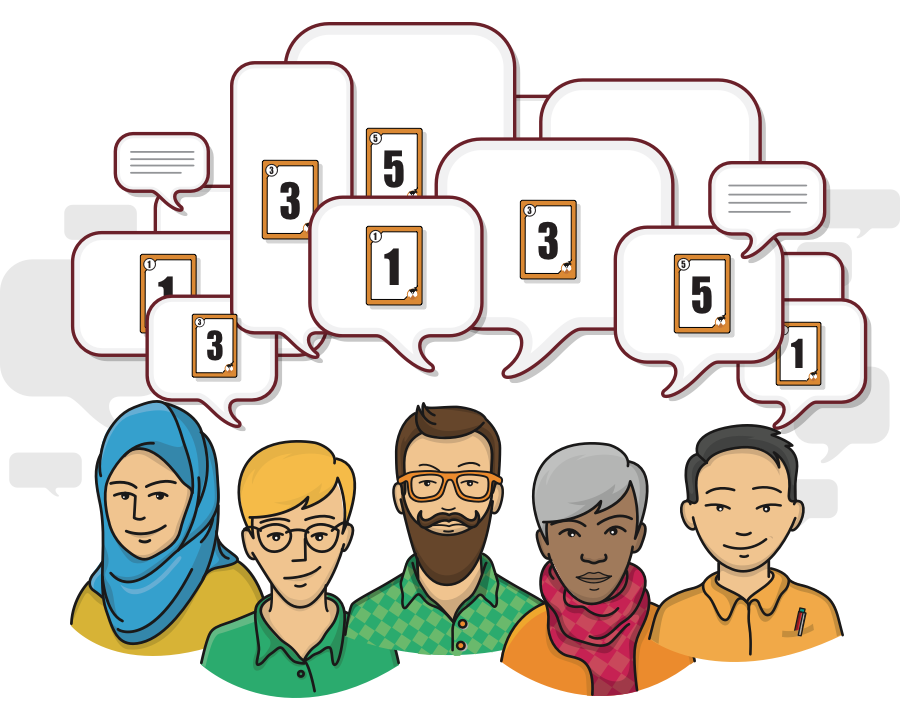Planning Poker® is a consensus-based estimating technique. Agile teams around the world use Planning Poker to estimate their product backlogs. Planning Poker can be used with story points, ideal days, or any other estimating unit.

Planning Poker® is a consensus-based estimating technique. Agile teams around the world use Planning Poker to estimate their product backlogs. Planning Poker can be used with story points, ideal days, or any other estimating unit.
Planning Poker is an agile estimating and planning technique that is consensus based. To start a poker planning session, the product owner or customer reads an agile user story or describes a feature to the estimators.
Each estimator is holding a deck of Planning Poker cards with values like 0, 1, 2, 3, 5, 8, 13, 20, 40 and 100, which is the sequence we recommend. The values represent the number of story points, ideal days, or other units in which the team estimates.
The estimators discuss the feature, asking questions of the product owner as needed. When the feature has been fully discussed, each estimator privately selects one card to represent his or her estimate. All cards are then revealed at the same time.
If all estimators selected the same value, that becomes the estimate. If not, the estimators discuss their estimates. The high and low estimators should especially share their reasons. After further discussion, each estimator reselects an estimate card, and all cards are again revealed at the same time.
The poker planning process is repeated until consensus is achieved or until the estimators decide that agile estimating and planning of a particular item needs to be deferred until additional information can be acquired.
Most teams will hold a Planning Poker session shortly after an initial product backlog is written. This session (which may be spread over multiple days) is used to create initial estimates useful in scoping or sizing the project.
Because product backlog items (usually in the form of user stories) will continue to be added throughout the project, most teams will find it helpful to conduct subsequent agile estimating and planning sessions once per iteration. Usually this is done a few days before the end of the iteration and immediately following a daily standup, since the whole team is together at that time anyway.
Absolutely. Teams estimating with Planning Poker consistently report that they arrive at more accurate estimates than with any technique they’d used before.
One reason Planning Poker leads to better estimates is because it brings together multiple expert opinions. Because these experts form a cross-functional team from all disciplines on a software project, they are better suited to the estimation task than anyone else.
After completing a thorough review of the literature on software estimation, Magne Jørgensen, Ph.D., of the Simula Research Lab concluded that “the people most competent in solving the task should estimate it.”
Second, a lively dialogue ensues during poker planning, and estimators are called upon by their peers to justify their estimates. Researchers have found that this improves estimate accuracy, especially on items with a lot of uncertainty as we find on most software projects.
Further, being asked to justify estimates has also been shown to result in estimates that better compensate for missing information. This is important on an agile project because the user stories being estimated are often intentionally vague.
Additionally, studies have shown that averaging individual estimates during agile estimating and planning leads to better results as do group discussions of estimates.

Get in touch
To be able to help we need to assess each project individually. Our free project assessment session will help us recommend the first steps you'd need to take to make scrum work for you.
Schedule a call